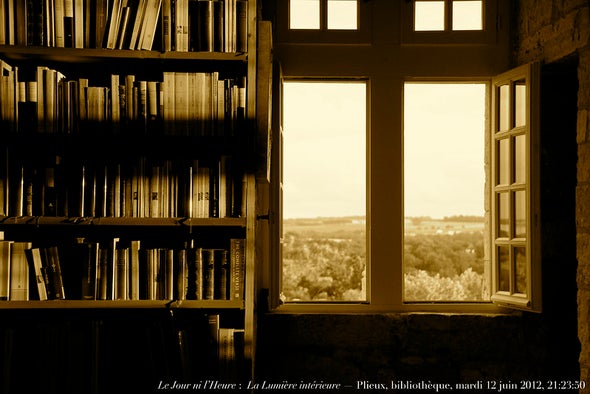Creating poetry with the fundamental theorem of arithmetic

When I put together my page-a-day calendar, published by the American Mathematical Society (why, yes, it is still available; thanks for asking), I knew I wanted to include a healthy dose of poetry. I love seeing poets and mathematicians play with mathematical ideas in settings that are not governed by the rules of theorem-proving. When I was poking around for poems that would work well for the calendar format, I was struck by this poem by University of Connecticut mathematician Sarah Glaz. I used it for the January 13 page, naturally enough.
13 January 2009
12=22×3 Anuk is dying for Anuk is dying in the white of winter
11 The coldest month
10=2×5 Anuk is dying in the falling snow
9=32 The white of winter for Anuk is dying
8=23 Anuk is dying for the white of winter
7 The drift of time
6=2×3 Anuk is dying in the white of winter
5 The falling snow
4=22 Anuk is dying for Anuk is dying
3 The white of winter
2 Anuk is dying
1 .
Something about the stark language and repetition in the poem grabbed me before I noticed its structure. I appreciated it even more when I saw how the poem was based on the fundamental theorem of arithmetic, which states that every whole number greater than 1 has a unique prime factorization. Glaz composed phrases to represent each prime number and combined them as dictated by each number’s factorization, using “for” for exponentiation and “in” for multiplication.
Glaz is not the only writer who has used this and other ideas from number theory to construct poetry. In an article she wrote for the 2011 Bridges Math-Art conference, she shares several poems about or inspired by prime numbers. “On the Sadness” by Carl Andre is another arresting poem using the same structure. Joanne Growney, mathematician, poet, and author of the blog Intersections—Poetry with Mathematics, wrote an environmentalist poem in a similar way.
I have been observing Math Poetry Month every April since 2014, when Stephen Ornes pointed out that April is both Mathematics and Statistics Awareness Month and National Poetry Month in the US. This year, I am planning to spend some time using the fundamental theorem of arithmetic to guide me as I try my hand at poetry.
The views expressed are those of the author(s) and are not necessarily those of Scientific American.



